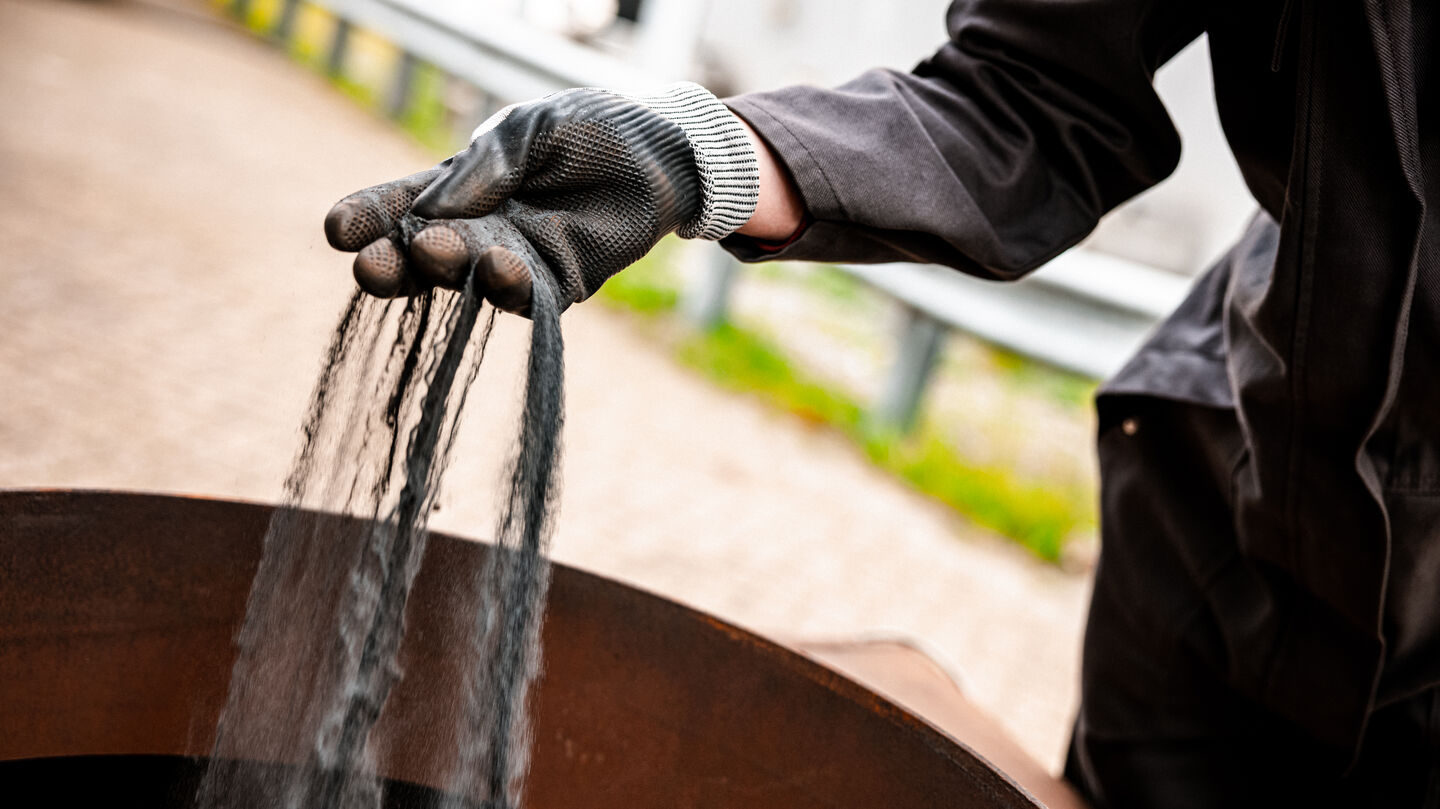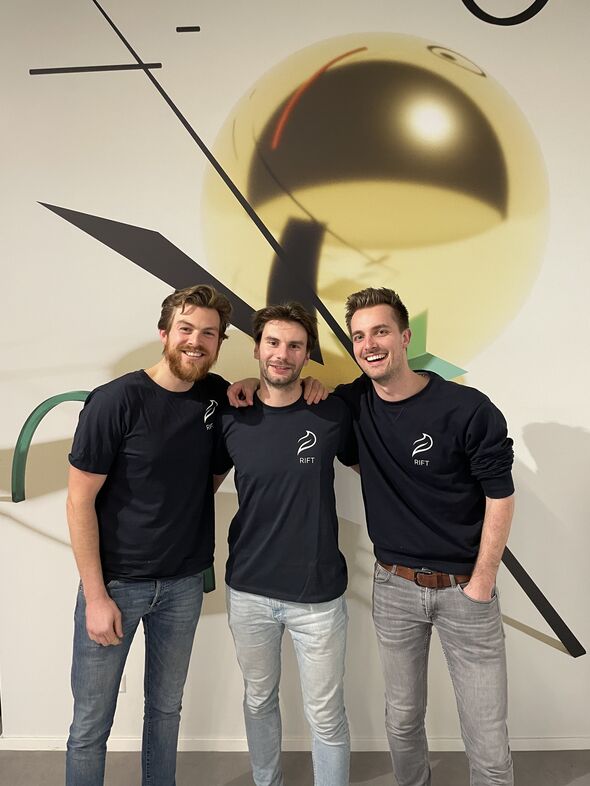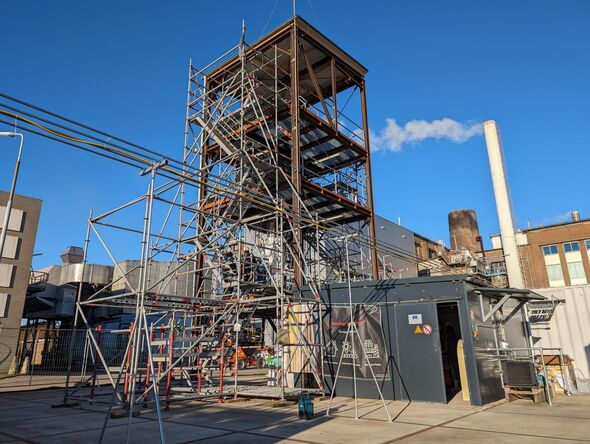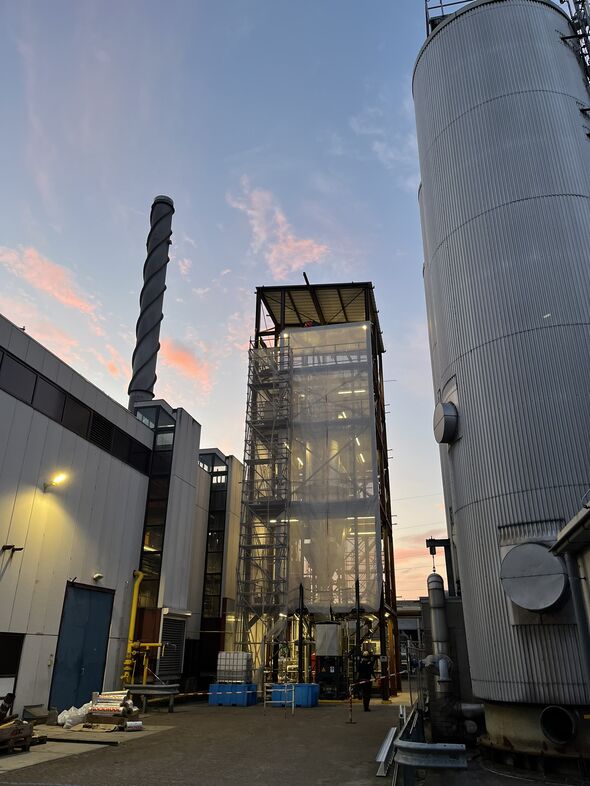
RIFT turns five: "Boys' story book and rollercoaster"
Three TU/e alumni and Bill Gates believe in the dream of making the industry natural gas-free using iron fuel
Making renewable iron fuel the industry's standard fuel. The dream that Mark Verhagen, Lex Schepers, and Vincent Seijger are realizing in their startup RIFT. In five years, they transformed their own invested savings into 2.3 billion in outstanding orders and a potential saving of 3 megatons of CO2.
Startup RIFT – which stands for Renewable Iron Fuel Technology – is celebrating its fifth anniversary this week. But instead of celebrating this big, the employees are always focusing more on the moments when things succeed that were previously impossible. Founders Verhagen, Schepers and Seijger combine backgrounds in chemistry, mechanical engineering, and industrial engineering to make iron fuel the standard for the industry.
"I've always been interested in the industry and wanted to make it more sustainable," says Verhagen. Fascinated by the amount of heat the industry requires for its production processes and the associated emissions, he quickly realized he could make an impact if he found a good solution.
Feasibility
He and his fellow students learned that electrification and hydrogen would make the industry more sustainable. Verhagen conducted many feasibility studies for innovations in the industry, but found that the taught theory didn't apply to the industry: fossil fuels remained necessary. "It wasn't the fault of the people in those companies; they often wanted the change to happen. But it has to be technically feasible, the CO2. impact has to be as low as possible, and it can't be too expensive, otherwise you'll price yourself out of the market."
He briefly lost faith in the energy transition. We can make cars more sustainable through electricity and households with solar panels. But we can't fix the industry, which is so intertwined with society, he concluded. Yet, giving up wasn't an option. There were simply things missing from the range of sustainability options, and he was going to find them.
SOLID
RIFT's launch was marked on October 6, 2020. But the idea had already been hatched the previous summer. Verhagen, Schepers, and Seijger lived in the same student house and were having dinner on the roof terrace. Schepers spoke about his plans for the coming year of college: technical manager for the student team SOLID. "What do they do?" Verhagen asked him.
With Schepers’ answer - making industry more sustainable through iron fuel -something clicked in Verhagen’s head: this is interesting, but he also thought that if it were a truly good idea, corporate companies would surely already be on that train. "I'll do a feasibility study for you, and with those conclusions you’ll be able to let this go," Verhagen thought, saving his housemate valuable study time. But that study actually revealed the technology's potential and that the SOLID team was a leader in this field.
A week and a half later, both he and Schepers were on the team and managed to convince Seijger as well. After a year of hard work in the student team, they decided: this needed more momentum. RIFT was born.
Anniversary
The fifth anniversary wasn't celebrated in a big way. "Honestly, I had to be reminded that it was last Monday," Verhagen blushes. "We certainly do celebrate, but more the moments when we made the impossible possible."
He beams as he thinks back to the moment when a natural gas flame was no longer needed to keep the iron dust burning. Until recently, it was necessary for iron dust to be supported by a natural gas flame, just like with coal and biomass. On one of the test days, the process was successfully phased out, but the day was nearing its end, and a choice had to be made: quit to catch dinner or continue working.
The colleagues decided to call home to tell them they wouldn't be joining them for dinner that evening. It was the same evening that the first gas-free flames were created. "The pride and sparkle I saw in my colleagues' eyes was priceless. Something like that is celebrated extensively."
Oxygen
Unlike traditional fuels like gas or oil, burning iron powder doesn't produce a flame or CO2. Burning iron powder is essentially an accelerated form of rusting.
Unlike gases or oils, iron powder reacts with oxygen to form iron oxide (rust), a chemical process that doesn't produce a flame but can reach high temperatures. This heat can then be used to produce steam or drive turbines.
Bill Gates
RIFT has production plants for the fuel and boilers that will be placed on site. In the fuel plant, hydrogen is converted into iron fuel. This is then sent to the industry and burned in the customer's boiler.
"If we combine our production sites in Rotterdam, Moerdijk, and Antwerp, we can save 3 megatons of CO2 per year. And we offer the fuel cheaper than natural gas, the dominant fuel in the industry today." That the iron fuel is cheaper than natural gas was a prerequisite for investor Bill Gates. He indicated that it is vital to get the industry on board.
Even though the team now has a solution to make the industry more sustainable, there is still plenty to learn about their own invention. "It might sound strange to the outside world, but we know it works, but not exactly how. To understand this better, we also continue to conduct fundamental research together with the university."
It's not surprising, by the way, that they don't know exactly how it works. Until 1980, people didn't know exactly how combustion in a car worked, even though it had been on the market since the early 1900s. Learning exactly how it works is important to make the technology cheaper in the long run and thus make it accessible to a larger part of the industry.
Dreaming further
Verhagen remains down-to-earth: the dream he has, has certainly not yet been achieved, although they have come a long way. "It's like a young boy’s story book. And a huge rollercoaster."
Numbers and process
Started in 2020 with: 3 founders, only some savings and a few desks in the Disruptor building.
After five years: approximately 80 employees, over 2,8 billion euros in revenue and the entire ground floor of Alpha.
Both the building RIFT started and their current home are on the TU/e campus.
Five steps
RIFT has a step-by-step plan that it is closely following: after the feasibility study (1), they made an industrial prototype (2), followed by an industrial pilot (3) and the industrial demo (4). After five years they have arrived at the final stage: commercialization, meaning entering the market.
After five years, the iron dust company has reached step 5. This means: the first contract (with Kingspan Unidek in Gemert) has been signed for 25 million euros, and letters of intent have been signed by numerous other companies for another 2,8 billion. Verhagen expects the first customers to be able to use their iron fuel in 2028.
By 2040, they want to have multiple power plants in multiple locations around the world. They are considering the US, Canada, and Africa. By 2050, the startup — probably a scale-up by then — hopes to have larger systems worldwide. “A bit like the oil industry we know today. Think of it as the slow spread of a sustainable oil slick.”
Commercialization
Verhagen, Schepers and Seijger used the first year to test their ideas. With their own savings they ordered the first machines. This was followed by a small government loan to finance the first prototypes. Another 400,000 euros in loans was secured, but the startup actually needed 1.2 million to build the desired prototypes. It was still too early for investors, so they asked suppliers for support. This proved successful.
After the first successful prototypes, the phase with investors - venture capitalists - followed. Two million euros were raised, including from Bill Gates. Several more rounds of investments and subsidies followed, until the company finally launched an industrial pilot.
A boiler system was installed at Ennatuurlijk's heating network in Helmond. You need to deploy your system in an industrial environment to fully simulate the situation realistically. This includes safety requirements, emission standards, and legislation. Upgrades followed, with components removed and new ones installed. All to improve performance. Finally, the system was ready to launch.
Embracing opportunities
There's regular criticism about what could be improved at the university, but Verhagen urges students to also consider what already exists and utilize it. "We told Bill Gates about the model of departments, student teams, institutes for societal challenges, and business partners with whom you can test your ideas. He said he hadn't seen that anywhere else, but he thought it was the ideal model."
According to Verhagen, many technological innovations fail to get off the ground because you need a lot of people who are constantly sticking their necks out. "It's incredibly hard work, and it's long-term." He knows. The CEO of RIFT lives in Eindhoven during the week and in Amsterdam with his girlfriend on weekends.
It involves sacrifices and long hours. "But you also see that a startup attracts people who share the same conviction and truly want to make a difference."
Potential opportunities and choices to be made can sometimes also bring fear. "We seriously underestimated the journey," Verhagen reflects. “Going all out for such a major social challenge is a life choice, it truly is.”




Discussion